Yesterday in “Stack It!” I talked about a test I was running to see how the result of stacking hundreds of extremely short exposures compared to the results you get with a single long exposure image; you might want to read that first for the background information on the results I’m sharing today.
To pick up where I left off yesterday, it took a LONG LONG LONG time to process the stack of 422 images – over 16 hours! The processing was taking up most of my computer’s brain, so I couldn’t really do anything else while it was thinking so hard. It’s not wise to deny me the use of my computer for 16 hours. By the time I saw the product of the stack, at 11pm last night, I was too tired to do anything but take a cursory glance at it. I was not impressed with what I saw.
After a good night’s sleep, an excellent cup of coffee, and a fortuitous catch of a smoky sunrise, (image below) I felt excited to get my hands on that ugly, unprocessed stacked image and see how much I could pretty it up.
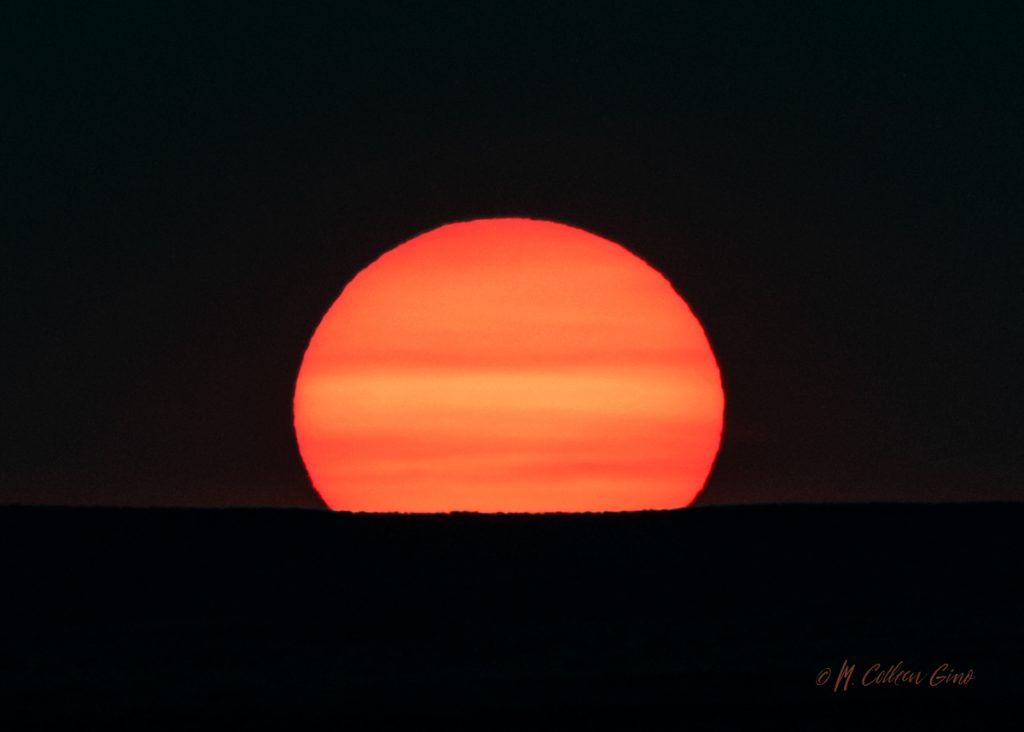
I opened it up and, yup – it was just as ugly as I remembered it to be. But that’s not unusual, most images need a bit of processing to bring out their potential. Next, I tracked down an image to compare the stack to, which was a single long exposure image of Orion, taken a couple of years ago by fellow MROI astrophotographer, Dylan Etscorn. Let the comparisons begin!
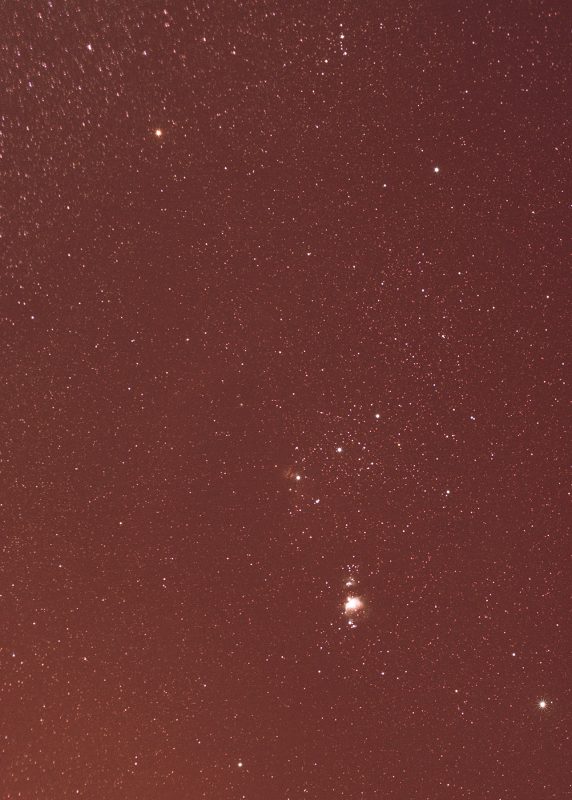
Orion and Running Man Nebulae, and just see the Flame Nebula in Orion’s belt.
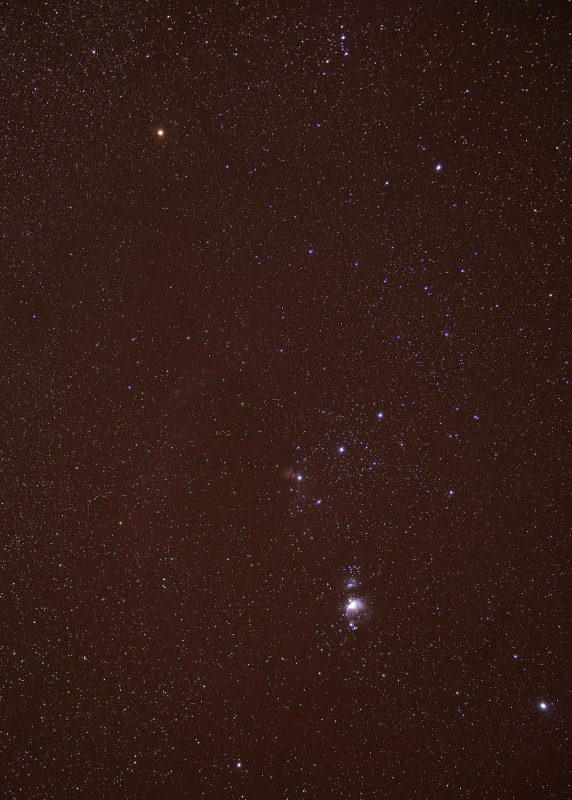
Again you can easily see the Running Man and Orion Nebulae, and you can see not only the Flame
Nebula in the left-most star of Orion’s belt, but you can barely make out the Horsehead Nebula below it.
Right out of the gate, the single exposure definitely looked better than the stacked image. And keep in mind, the stacked image consists of 14 minutes worth of exposure time, while the single image was just three minutes long.
Next, I did some basic processing to both images, mainly just trying to get the red out of the background and stars of the stacked image while trying to leave the red in the nebulae, and adjusting the contrast and color a bit in the single exposure.


After getting this far, I could clearly see the winner so decided not to spend any more time on image processing. The images below are identical to those directly above, just cropped so you can more easily see the detail, or lack thereof, in the nebulae.
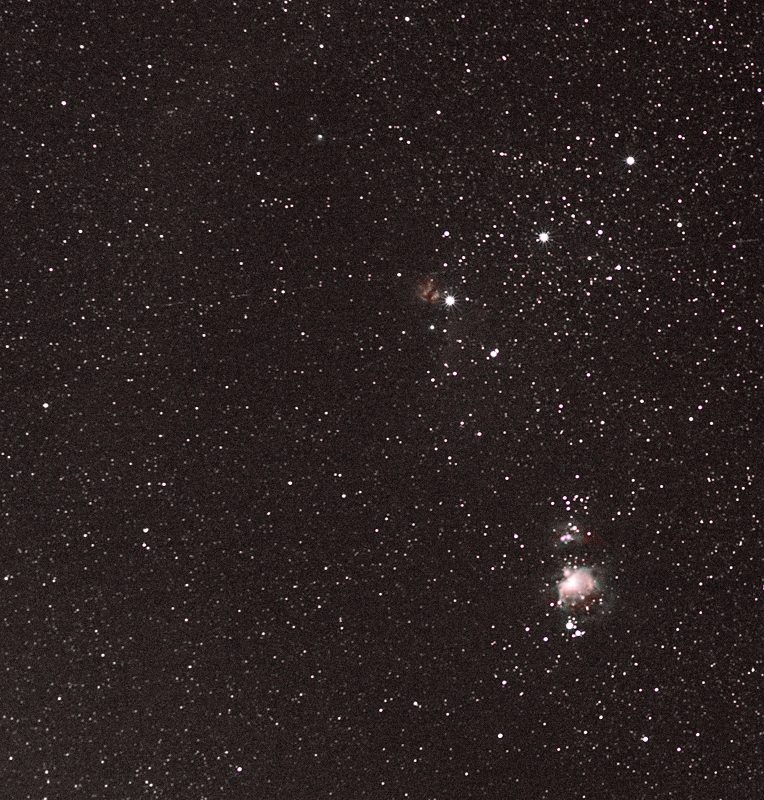
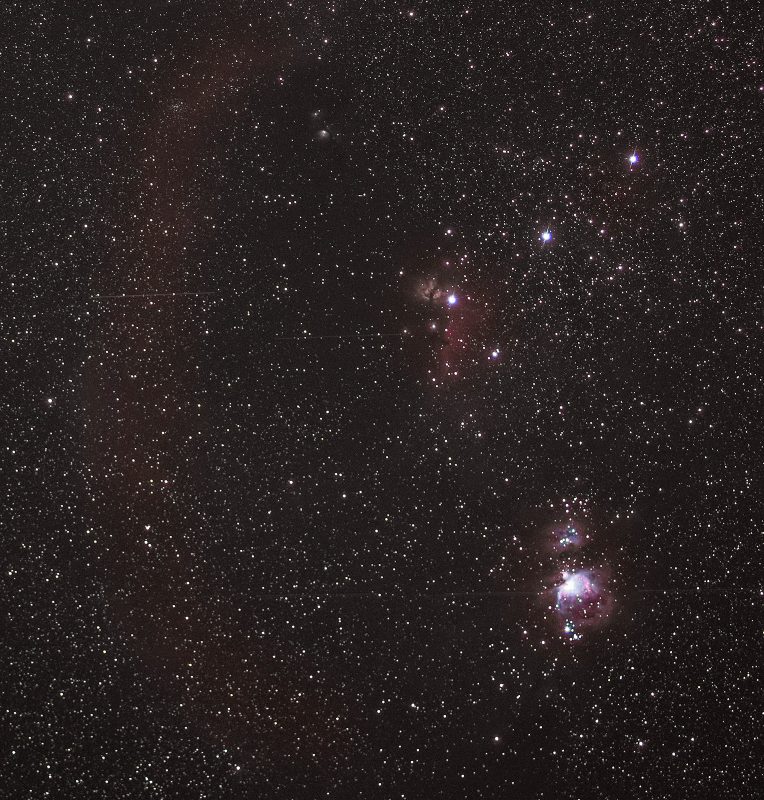
The images below are cropped once more, to focus on the Orion, Running Man, Flame, and Horsehead Nebulae.
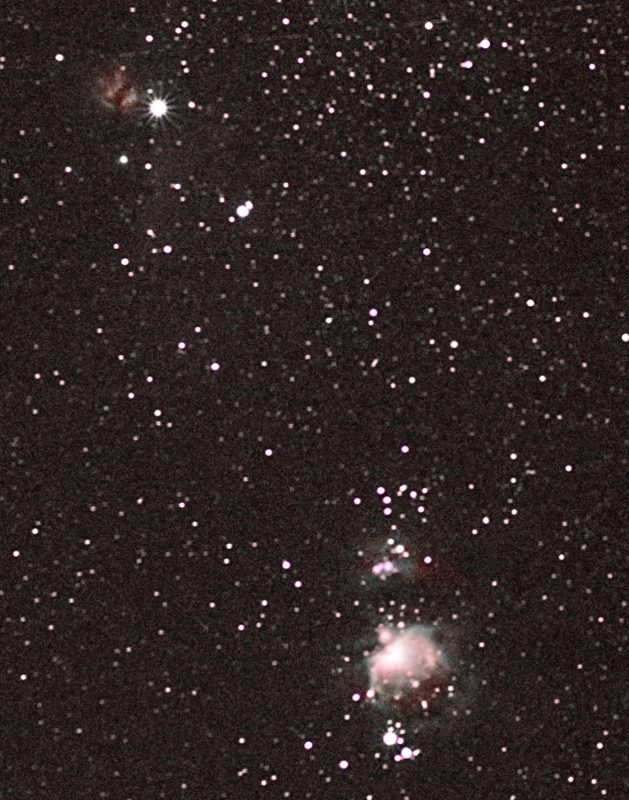
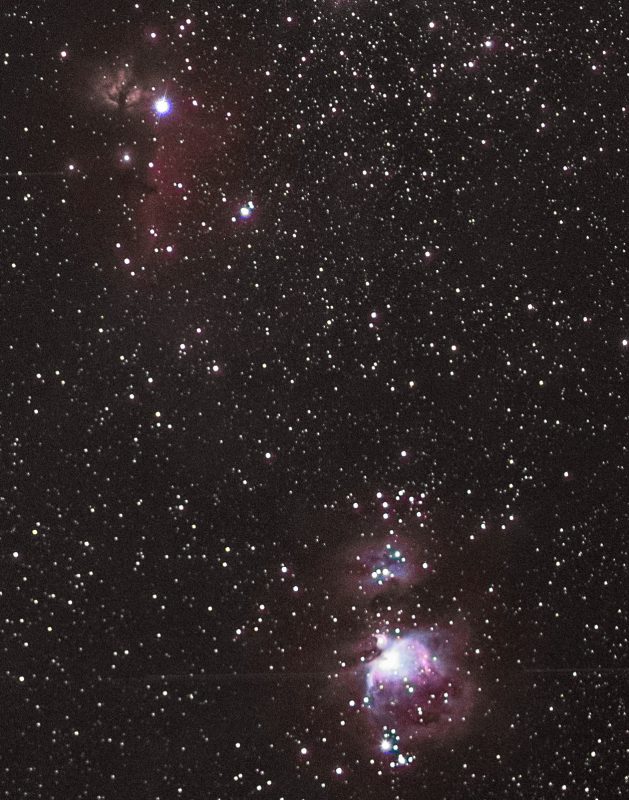
For this particular test anyway, I’m changing the chant from “Stack It! Stack it Good!” to “Stack It? Stack it, Baaad.”. Now, that doesn’t mean that you shouldn’t try stacking short exposures, especially if that’s your only option. In fact, I’m sure I’ll try this again myself. I could even reprocess this set of images with different parameters and likely come up with a better result, although I’m loathe to give up the use of my computer for 16+ hours again anytime soon. But in spite of the 4 AM wakeup call to shoot Orion, over 800 shutter actuations on my beloved D850, the 16+ hours of computing time, and a less than dazzling final result that I’m likely just going to toss, I’m glad I went through the exercise. In the end, I’m of the opinion that it is better to have stacked and tossed, than never to have stacked at all.
M. Colleen Gino, MRO Assistant Director of Outreach and Communications
